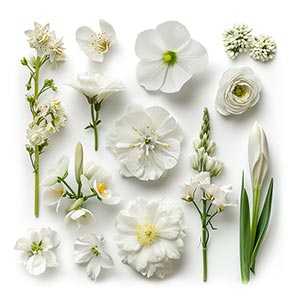White Flowers, a term often used to describe a variety of fragrant flowers with white petals, have been a staple in perfumery for centuries. This group includes flowers such as jasmine, gardenia, and tuberose, each known for their distinct and captivating aromas. Historically, the use of white flowers in perfumes dates back to ancient civilizations, where they were prized for their luxurious and enchanting scents. The scent profile of White Flowers in fragrances is typically rich, heady, and intensely floral. They are known for their ability to impart depth and a sense of opulence to a fragrance. White Flowers are often used to add a heart or base note in perfumes, giving them a long-lasting and pervasive quality. Their natural sweetness and floral intensity make them ideal for creating sophisticated, romantic, and elegant scents, often found in the floral and oriental fragrance families.
Natural or Synthetic?
While white flower essential oils can be extracted from the flowers themselves, the process is labor-intensive and yields a very small amount of oil. This makes natural white flower oils quite expensive, and they are often used in small amounts to enhance the fragrance of perfumes. Synthetic white flower oils, on the other hand, are more affordable and readily available, making them the more common choice for use in perfumes.
Fragrance Families White Flowers Most Commonly Found In
Show fragrances that contain White Flowers as a note



